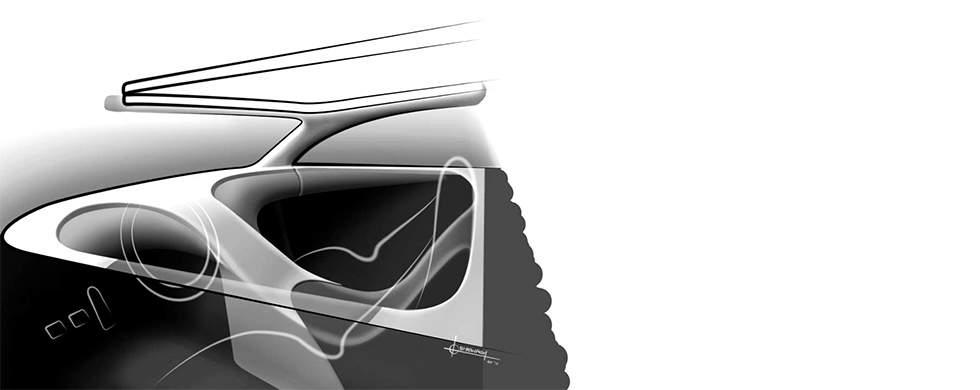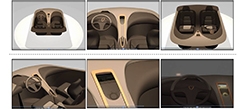Affective Design
Affective design to reduce aggressive driving
Is it possible to relax a driver through intentional design of the vehicle interior?
Summary
Aggressive driving has been recognized as a substantial problem in Europe and USA. This project aims to investigate whether it is possible to design a vehicle interior environment that communicates with the driver on a subconscious level to relax him/her. A calmer driver should react less aggressively towards other road users.
The work is divided in 3 phases: data collection & analysis, concept development and evaluation. The report also includes phase 4 where I reflect about the results and experience from the first 3 phases. In phase 1, I build a knowledge base by studying aggressive driving, aggression in humans, relaxation techniques and the effects of colour on emotion. This is supported by benchmarking studies of local spa facilities and targeted user exercises to collect people’s relaxation preferences. The results of phase 1 are used to drive the concept development. A number of concept vehicle interiors are developed through sketch-ideation and one of them is selected. The selected concept is then developed in detail including lighting concepts, main driver controls, basic user interface, colour scheme and materials. For the evaluation phase, a full scale physical mock-up of the driver area of the concept environment is created. A mock-up of a “standard car” environment is also created to use as a reference. The concept is evaluated by methodically-chosen test persons in terms of how it affects the driver emotionally as compared to the standard reference. Two aspects of the concept are evaluated: user first impression (perception) and effect on the driver (experience).
The concept has been perceived by the participants as conveying most of its design intentions well. It is also seen to positively affect the driver, significantly more than the reference environment, on the chosen emotional scales.
In conclusion, it is definitely possible to design a vehicle interior to relax the driver subconsciously to a certain extent. This design needs to be based on a solid analysis supported by user studies.
One also needs to note that people from different cultures react differently to the same design cues. The methods and results from this study can be used as a guideline for affective design in this area, but they need to be applied to the targeted users.
Skriv ut ![]()


